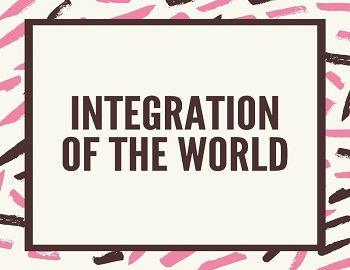Mechanistic and Humanistic Views of Organization:
(1) Mechanistic or Structural View of Organization- The mechanistic view regards organization as a formal design or plan which can be drawn up by the experts on the basis of some clear-cut settled principles much like the building plan prepared in advance by the architect according to some clearly understandable principles. This approach, observe Dimock and Dimock, “bears the stamp of the engineer seeking scientific precision, logical structure, and the one best way of performing each step and of relating the parts of a unified whole.” The organization is a formally declared pattern of relationship established by law and management. It is based on the nature and volume of work to be done and it is dictated by the requirement of efficiency in the sense of securing the most effective use of men and materials. This view holds that an organization is established and supported by authority and can be set out, although imperfectly, on a chart or diagram. It works on the basis of a formal set of work relationships. According to this view, an organization manifests five main features: impersonality, flexibility, division of work, hierarchy, and efficiency.
The mechanistic theory is based on two assumptions:
(1) Principles of an organization are very clearly known, and it is well within the reach of the experts to draw up a plan or design to suit the requirements of any sort of activity or purpose.
(2) The organizational plan must be considered before the personnel is to be employed in the organization.
Taylor, Luther Gulick, Urwick, Willoughby, and Mooney are the main protagonists of this view of an organization.
The mechanistic view of organization is, however faulty in several ways. The main defect is that it ignores the human element in an organization. As a matter of fact, we cannot understand the true character of an organization without stating the behavior pattern of its employees. The importance of the human element in an organization has been stated by Henry Fayol in these words “If we could eliminate these human factors, it would be easy enough to build up an organization. Anyone could do it if he had some idea of the current practice and the necessary capital. But we cannot build up an effective organization simply by dividing men into groups and giving them functions; we must know how to adapt the organization to the requirement of the place where it can be of most service.” Thus the human factor should never be ignored in any theory of organization. Any attempt to solve human problems without considering the human factor is bound to be a failure. It has to be accepted that an organization is a group of interrelated, interdependent, and interacting individuals. It is a human organization. It deals with human problems with a view to finding human solutions. It is not a machine.
(2) Humanistic View of Organization- The humanistic view of organization stands associated with the name of Elton Mayo and his supporters. It puts great emphasis on people, human motivations, and upon informal group functioning. It considers human organizational behavior as quite complex, subject to various influences impinging on individuals from different points of view. It stresses the human aspect of organization which is ignored by the mechanistic view. It also gives importance to the social character of human beings. It distinguishes between formal and informal organizations and rejects formal institutionalization. It regards the informal day-to-day functioning of an organization as more important than a formal organization which is just a structure of rules and divisions.
(3) Synthesis of Mechanical and Humanistic Views- The mechanical and humanistic views in themselves do not individually reflect the correct nature of an organization. The organization has always been a set of structures, methods, and procedures. But along with this, it also has to be a human arrangement- a team of personnel and a set of human relations carrying out its purpose. The acceptance of the mechanistic view would make it a formal and static machine. However, the acceptance of only the humanistic view would make it too informal and too irrational for an organization to have both formal and structural dimensions. It is, therefore, essential to have a composite view of an organization. However, an unscientific mixture has to be avoided at all costs.









Comments (No)